Fish scale disease is a common ornamental fish disease, with a high mortality rate. Just keep in mind – prevention is better than treatment. Once infected by fish scale disease, the earlier you treat the fish, the higher the cure rate. If you know little about fish scale disease, you can read on for more about it. In today’s article, we will dig into the deeper causes, treatment, and prevention of scale disease in fish.
Content Table
What Is Fish Scale Disease
Fish scale disease
Fish scale disease is a bacterial disease, also named pine scale disease and vertical scale disease. It usually occurs in terms of low water temperature, like winter, spring, or short-term water temp fluctuation and changes in your fish tank. Generally, fish scale disease is not contagious. However, it is better to quarantine the sick fish. For one thing, the mortality rate is extremely high. For another, dead fish would deteriorate the aquarium water and lead to poor water quality.
Symptoms of fish scale disease
| Fish body color turns dark | Fish scales ulcerate continuously | Edematous and congested base of fish scales | Bulgy abdomen and loss of balance |
| Bloating abdomen | Worms escaping from fish body | Congested body surface | The fish’s body turns upside down |
| Bulging eyes | The scales open like pine cones | Translucent or blood-containing liquid on the fin base | Sluggishly moving and swimming |
| Discoloration of fish scales | Loose fish scales | The translucent liquid between the fin membranes | Breathe hard |
Specifically, facing the edematous and congested base of fish scales, as long as you press the scales lightly, they will fall off, with liquid ejected from the base of the scales. After 2–3 days, the sick fish will face death.
Effects of fish scale disease
- Effects on appearance: Less aesthetically attractive and appealing
- On fish health: Worse health status
- On fish growth: Limit the fish growth
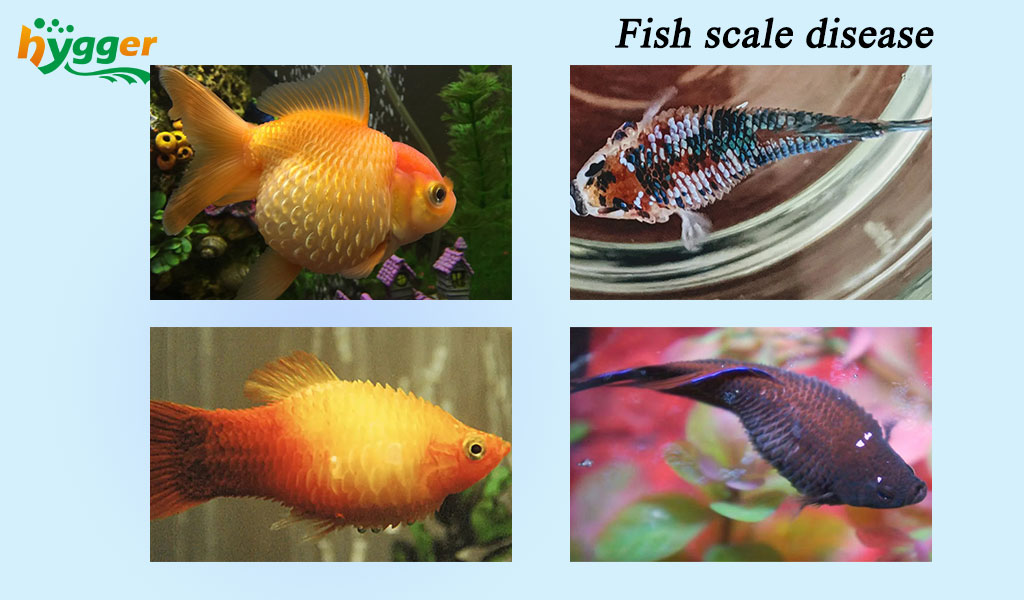
Why Is My Fish Losing Its Scales
Causes of fish scale disease
1. Main causes
Fish scale disease is mainly caused by bacterial infection, parasitic infection, toxin invasion, or kidney problems.
Bacteria may include Chillibacterium punctatus, Amonas, and a bacterium similar to Trichobacterium punctiformis, etc. The bacteria will not threaten fish in good status. On the contrary, in the case of bad water conditions, fish will be poisoned chronically, declining their resistance and immunity. As bacteria grow, fish will suffer fish scale disease at the point of imbalance between beneficial and harmful bacteria.
2. Other causes
- A sudden drop in water temp
Most ornamental fish demand stable water temp. Water temperature fluctuation would harm fish health, leading fish to be vulnerable to disease. By the way, improper water changes and the temperature difference between day and night will trigger a sudden drop in water temperature.
- Overfeed
Overfeeding will deteriorate the aquarium water, which may be the reason for enteritis and ascites. In this case, sick fish would lose the desire for appetite and become inactive. Long-term overfeeding will cause loose or vertical fish scales.
- Injury
Aquarium decors with sharp edges will scrape fish scales. If you do not heal it in time and with poor water quality in your tank, then the injured fish will suffer inflammation, partially lost fish scales, or completely open fish scales.
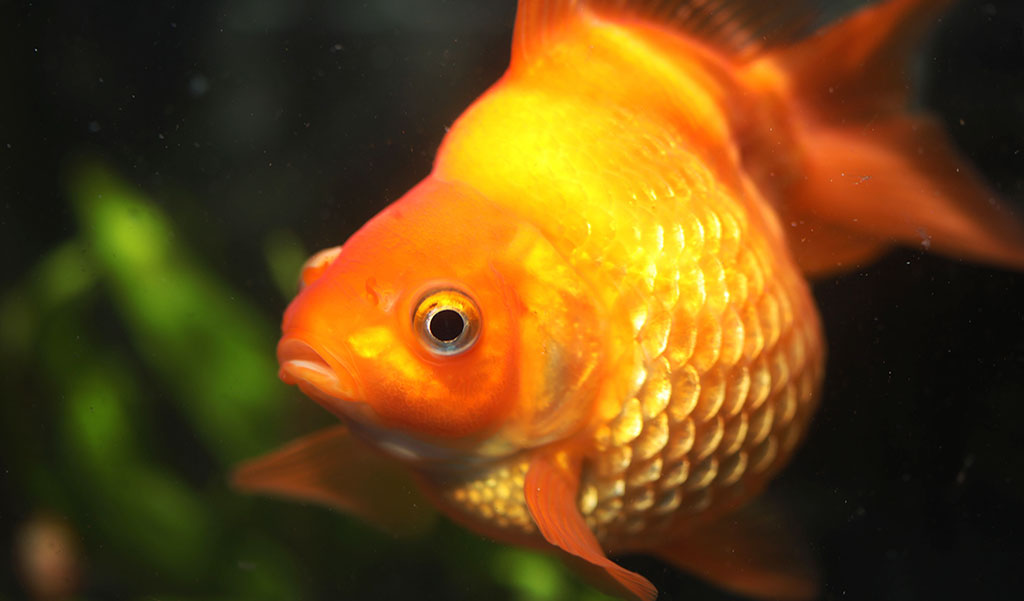
Can fish recover from scale loss
Once the fish scales fall off, most tropical fish can not regenerate. Because scale loss is a severe fish disease, with a low cure rate. Though the disease can be healed, there are scars on the fish. Nonetheless, it is said that some fish can recover from scale loss, like Asian arowana. They can regrow scales as long as you keep the fish healthy and the living environment in great condition.
How to Cure Fish Scale Disease
Once you find the root cause of the fish scale disease, it is time to take the necessary steps and start the fish scale disease treatment.
Treat sick fish with aquarium salt
You can directly add aquarium salt to the tank, which is not damaging to nitrifying bacteria. Also, it is feasible to bathe the fish for 10 minutes each day with 2 percent of aquarium salt and 3 percent of sodium bicarbonate solution or 3 percent of baking soda. Fish scale disease can be treated with aquarium salt in the face of the following cases:
- Fish do not start decaying
- No ascites on the fish
- Only partial loss or vertical fish scales
Apply medication
- Metronidazole/Gentamicin: The two medications can be used when facing congestion and ulceration in fish bodies, inactive fish, plus loss of weight. Generally, just follow “30 liters of water for one tablet”. After using the medication, you should change 30-40 percent of water per day.
- Hydrochlorothiazide tablet: The tablet can be used to treat edema. It helps the fish to discharge the fluid in the body and eliminate edema. Just grind the tablet into powder, then mix it into fish food.
- Oxytetracycline: Commonly, you should follow one tablet of oxytetracycline for one hundred liters of water. But you can adjust it according to your real-time status.
Create a great living environment
- Maintain great water quality
To heal fish scale disease, you should improve the water quality and keep clean water, which is helpful to decrease the possibility of fish scale disease infection.
Doing water changes is necessary. You can change 50 percent of the water first. Then change the water lasting for three days. It is beneficial to dilute toxic substances in the water, and then improve the water quality.
- Filter media cleaning
It is vital to clean or replace the filter media. Since harmful bacteria may grow on the filter media, it reduces the effectiveness of filter media plus leads to bad water conditions.
- Keep sufficient oxygen
Fish need oxygen to survive. Consequently, you can add an aquarium air pump to improve and keep plenty of oxygen. Aside from that, an aeration strip kit can be an excellent choice for keeping a bubble curtain in your tank.
What Kind of Fish Is Prone to Scale Disease
Ornamental fish are susceptible to fish scale disease
Fish scale disease is commonly found in tiger fish, goldfish, koi fish, guppy fish, and other killifish, tropical fish, or older fish. Fish may encounter fish scale disease in winter and spring, and when aquarium water deteriorates, fish suffer injury.
How to prevent fish scale disease
- Do regular water changes
You can change 15-30 percent of water once each week. And it is necessary to change the water more frequently without a great filtration system. Just determine the water change frequency according to the aquarium status.
- Reduce stress on fish
The essential aspect is to keep stable water temp, clean water, and healthy aquarium conditions. To maintain great water quality, you can add photosynthetic bacteria, bacillus, and other probiotics. Also, never overstock.
- Never overfeed
Feeding your fish twice each day is great. Besides that, it is recommended to make sure your fish finish eating within 3–5 minutes.
Final Thoughts
Compared with fish scale disease treatment, prevention should be the first step. Fish scale disease is hard to heal. Also, there is one tip for you. During the treatment process, you can stop feeding the fish. Of course, just decide according to the actual situation. It is not a must.
If you have more information on diagnosing or treating fish scale disease, welcome to share it with us in the comment. We are happy to receive your sharing. Finally, thanks for taking the time, and we hope this article helps.
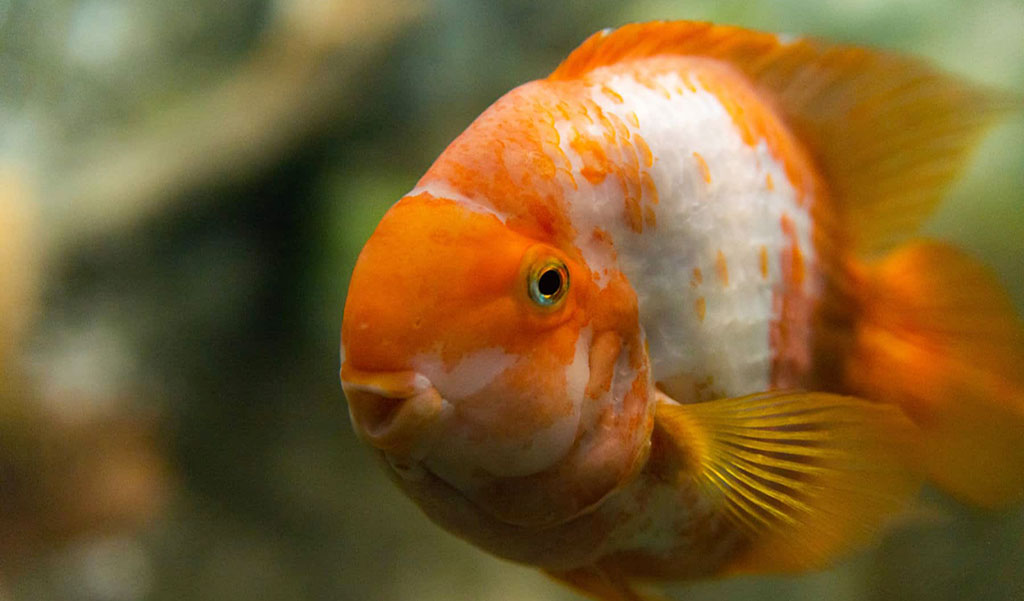
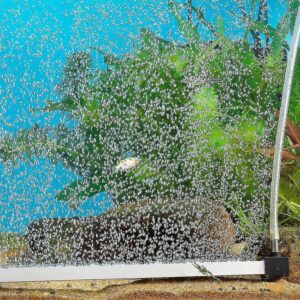
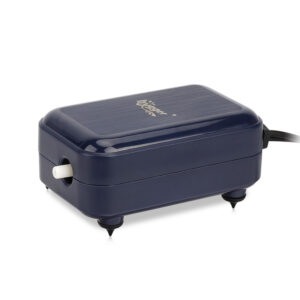
Leave a comment